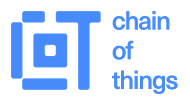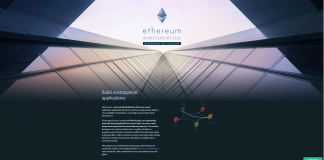Yesterday, Chain-Finance held its Distributed Ledger and Trade Finance event in London. Focussing on the potential of blockchain technology to renovate and simplify supply chain management and finance, amongst other things, the conference discussed issues such as improving speed and efficiency, securing shipments and legal documents as well as barriers to the adoption of the technology.
After a brief introduction to blockchain technology and cryptocurrencies in general, Chain-finance’s Hans Lombardo took the floor to provide an overview of the ‘blocktech’ start-ups tackling supply chains and trade finance. Noting some of the problems in trading, such as the requirement to send physical copies of bills of lading in triplicate or even quadruplicate for shipping, Lombardo introduced start-ups such as Skuchain, Cargochain, Blockfreight, Fluent, Wave and Zerado, who would be speaking later. Solutions from these companies ranged from smart contracts which govern trade agreements to tracking of shipping containers. The interest and potential in these areas were highlighted by Fluent’s funding reaching $2.5 million earlier this year.
Benoit Vandevivere from Consentio then introduced a different focus of blockchain technology in trade finance with a description of how Consentio works to streamline trade processes. Discussing his experience of the difficulties he faced in trading, Vandevivere explained Consentio did not focus on bills of lading and shipping containers but rather provided solutions for crossing borders, currently intra-European. By working with regulated payment platforms, Consentio is working to digitise the supply chain, locking immutable proof of documents and payments in the blockchain, providing a far more simple and secure system than the current ones in place.
Following this, the audience heard from Mihai Cimpoesu, who spoke from a Chain of Things perspective on combining blockchain and IoT for supply chain management. He explained that, whilst data on the blockchain was immutable, the data that was put on needed to be validated and that showing the provenance of the data was also key. To that end, Chain of Things is developing a sensor chip that is able to monitor and upload various data and conditions for insurance and trade finance issues.
Tomasz Mloduchowski was next, introducing Zerado, an advisory firm focusing on new technologies, and one of its apps - ‘The Coffee House’. Harking back to a time where businessmen would meet in coffee houses to discuss and agree trade deals, The Coffee House aims to provide a trade finance solution by being the 21st century letter of credit. Also shown was Zerado’s ‘blockchain in box’ which enables access to a blockchain system when internet connectivity is otherwise available.
BigchainDB then was presented by Dimitri de Jonghe who described its scalable blockchain database. De Jonghe spoke about assets with crypto-conditions, providing a way to control contracts and finances by providing a solution somewhere between muti-sig wallets and smart contracts – something that would prevent a situation like the recent DAO disaster from happening. He also pointed out the Interledger Protocol which seeks to connect different blockchains in a similar manner to the internet connecting disparate intranets with a common protocol.
Finishing off the conference were David Goldstone QC of Quadrant Chambers and Barclays’ Anthony Macey. In Goldstone’s talk he noted the huge potential of providing even small efficiency boosts in the market, especially in international shipping which accounts for around 90% of world trade. Highlighting points that have been raised in previous conferences Goldstone reiterated the antiquity of the mechanisms used – many of which are still paper-based. Goldstone stated five problems that the area is likely to encounter.
- Truly representing real-life problems on the blockchain, with all the variables that can occur.
- How digital contracts mesh with real-world contracts, especially in terms of legality.
- How it would be structured and how problems are reconciled.
- Getting people on board with using code when dealing with large sums of money.
- Revolutionizing a very conservative area – resistance to change.
Macey followed on from this by picking out the areas he described as location, creditworthiness and origin, where blockchain had some potential to help.
Location: Aids in the reduction of fraud, improves tracking potential and reduces costs but mass adoption is needed.
Creditworthiness: Beneficial to SME transactions which otherwise would be deemed financially too costly; however, this would require a payment or value transfer medium which cryptocurrencies potentially may solve if less volatile.
Origin: Bringing trustlessness, immutability and transparency although initial data integrity and integrity checks would be required, as raised by Cimpoesu previously.
Overall the potential of blockchain technology was viewed extremely favourably but it was acknowledged that there are issues to be addressed and work still had a way to go before companies would be persuaded adopt it on a large scale.












